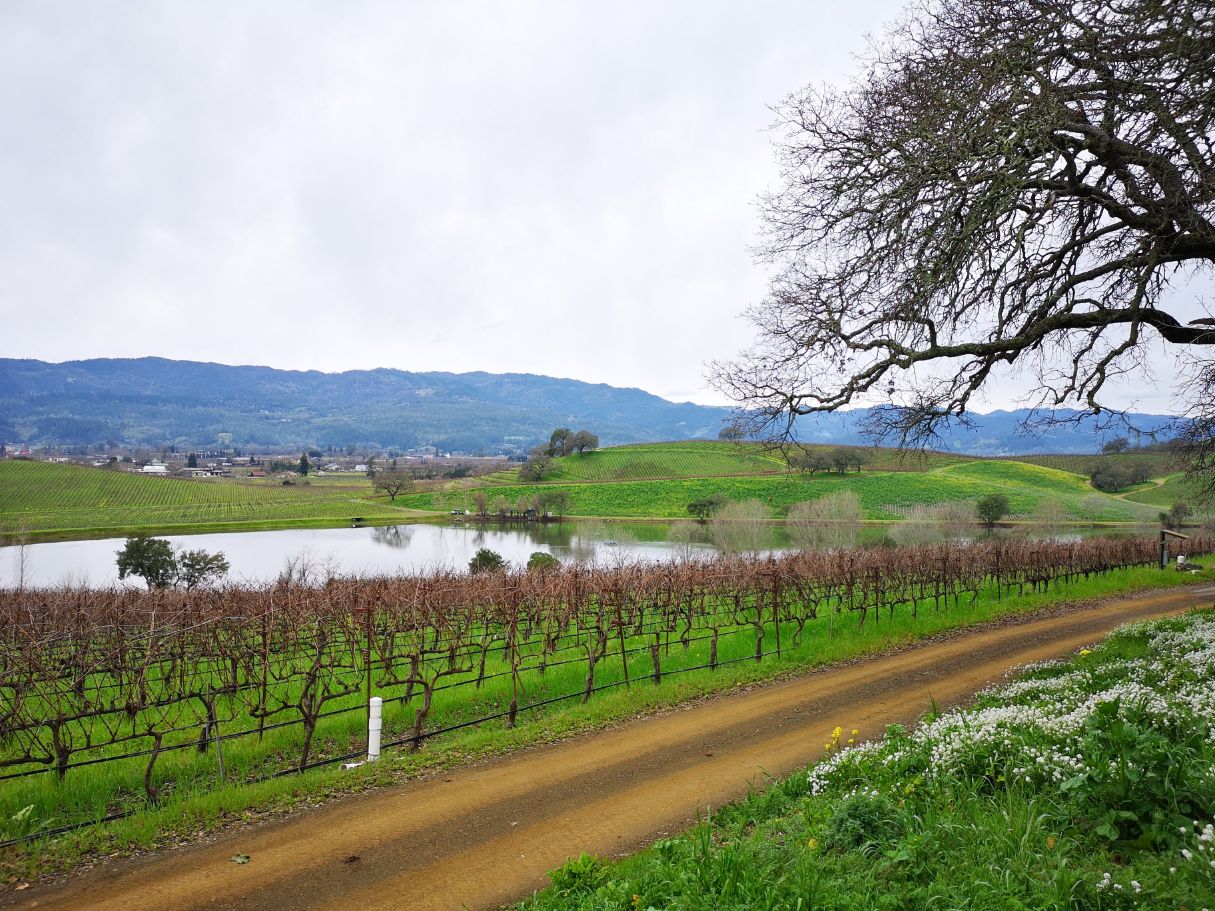
A view across the vineyards last year this time at Quintessa, emphasizing the biodynamic diversity of its unique ecosystem.
The 2018 vintage is yet another example of Napa Valley making much more balanced and refined wines that highlight a new drinkability for America’s most famous wine region. It could even prove to be a new benchmark for Napa Valley reds.
I tasted nearly 1,100 wines from Napa and Sonoma over the last two months with about half from the 2018 vintage. The year produced hundreds of polished and beautiful wines with fantastic aromatics and complexity as well as ultra-fine tannins.
To see exactly how Napa Valley is now making more balanced and drinkable wines compared to just a few years ago, try a bottle of recently released 2018 cabernet sauvignon. You will revel in the balance and character of most of these wines. Many are beautiful to taste now, even drink, but they have the harmony and structure to age.
I am not saying that the 2018 vintage is the best ever for Napa. The 2016 and 2013, for example, are better structured and will last longer. The 2017 and 2015 also may be more consistent in quality despite their hefty wines with the hot growing seasons. There are questions too about the 2020 vintage, which was devastated by the fire; many wineries made no wine. But the pure harmony and unprecedented balance in the well-made 2018s, both red and white, are very special and it’s hard to think of a better vintage for those looking for finesse and refinement in their young wines from Napa.
“It was a great season overall,” said Benoit Touquette of Realm Cellars, who made some of the best wines of his career in 2018. “It was pretty easy to manage and when you think about the picking it was very forgiving and you could pick at your leisure.”
This long and even growing season certainly made some terrific wines. What is striking about the young wines of 2018, both red and white, is their fragrant and diverse character on the nose and their polished and refined tannins as well as pure and complex flavors on the palate. So many wines have much more than just fruit flavors and delve deeply into a more earth driven sensation of dry and wet soil to bark and mushrooms.
Another attractive quality of the vintage is that sub-regions come through clearly in most wines. The reds from Pritchard Hill show the blue fruits and forest floor characters one might expect in the wines, while Rutherford shows the riper, more red fruit with dusty dry earth undertones often associated with the area. It’s just the same with chardonnay whether the whites are from Carneros or farther up the valley.

Tasting at Aubert winery in October 2018, just after the excellent harvest.
“For me it's one of my favorite vintages," said Rebekah Wineburg, head winemaker at Quintessa, which may have made its greatest wine ever in 2018. “It was one of my favorite harvests, and at Quintessa with all the diversity we have, where we have different soil types, different elevations, different aspects, it was a vintage where every single one of those different sub-terroirs let us know what they needed. We had time to listen to them.”
All of the above character and nature of the 2018s can be attributed to the relatively long and even grape-growing season. “Everything was delayed,” said Helene Mingot, winemaker and vineyard manager of Eisele Vineyard in Napa Valley. “It gave us time to breathe. Everything was done in its own time. It was very satisfactory as a technician. We had time to do everything that we needed to. The vineyards were well manicured.”
Mingot also highly praised the 2019 vintage and made a fabulous sauvignon blanc, which is releasing now. “2019 was ideal because of the winter and spring conditions. 2018 and 2019 summer and fall were fairly mild so both years were good years because we had the time to do a lot of segmentation in the vineyard and do what we had to do at the right time.”
Global winemaker Paul Hobbs, who is based in Sonoma but makes great wines in Napa added: “2019 will be even more refined [than 2018] with better purity and better precision. It will be the best of the decade. The 2019s are sensational.”
Hobbs noted that the only problem with 2018 was that many vineyards had too much crop and unless they were crop thinned regularly, winemakers may have had too many grapes. This could have led to slightly diluted or hollow wines in the end, which was proven by my tastings, so far.
“It was a bumper crop in 2018,” he said. “Two vintages in one. I have never seen in my 40 years a vintage with that much crop. We put more than 60%, and in some cases 70%, of the crop on the ground, and we still got normal yields. It was insane.”